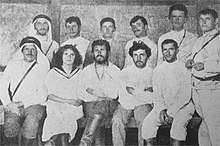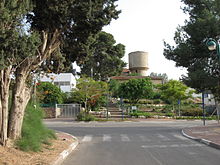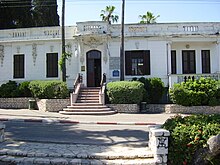Gedera
Gedera, or less commonly known as Gdera (Hebrew: גְּדֵרָה), is a town in the southern part of the Shfela region in the Central District of Israel founded in 1884.
[2] Its identification with the site of modern Gedera was proposed by Victor Guérin in the 19th century,[4] but was dismissed as "impossible" by William F. Albright who preferred to identify it with al-Judeira.
[7][8] Tel Qatra, which lies at the northern edge of Gedera, is usually identified with Kedron, a place fortified by the Seleucids against the Hasmonaeans (1 Macc.
[10] Gedera was established on a tract of village land purchased for the Biluites by Yechiel Michel Pines of the Lovers of Zion from the French consul in Jaffa, Poliovierre.
[13] The Zionist secular colonists of Gederah were young and considered aggressive towards the native Palestinian Arab population.
In 1949–1953, thousands of immigrants from Yemen, Romania, Iraq, Poland, Egypt, Morocco, Tunis, India, Iran, Libya, and other countries were housed in tent camps.
[10] Israel Belkind, a member of Bilu, described Gedera's relationship with its Arab neighbors as among the worst in all the settlements.
[10] Haim Hissin, also a Bilu member, criticized the Arabs for their provocative behavior, but also blamed the Jews for being unfair and arrogant.
[18] Gedera is built on seven hills in the Southern Coastal Plain which rise to the height of 80 metres (262 feet) above sea level.
Most estimates put their population at 50% of Gedera, making it one of the few primarily Mizrahi towns in the Central District of Israel.
[3] Gedera's position near the large south-central cities of Israel (Rehovot, Ashdod and Kiryat Gat), low prices for private homes and the fact that it is a green and quiet town yet it is in the central district near Tel Aviv and Jerusalem make it attractive to Israelis.
A major shopping venue built by Azorim is the Gedera Mall, located in the southeast of the town.
First opened in September 2007, Gedera Mall has small businesses along with anchor tenants from semi-major department stores from Israel and Europe.
[27] A concrete monument entitled "Bereshit Bara" ("Genesis") by the Austrian artist Ernst Degasperi stands in a garden opposite the museum.










